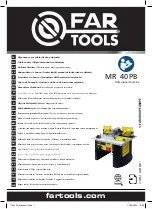
372
To configure a totally NSSA area, configure the
nssa
no-summary
command on the ABR. The ABR of a
totally NSSA area does not advertise inter-area routes into the area.
To configure an NSSA area:
Step Command
Remarks
1.
Enter system view.
system-view
N/A
2.
Enter OSPFv3 view.
ospfv3
[
process-id
|
vpn-instance
vpn-instance-name
] *
N/A
3.
Enter OSPFv3 area view.
area
area-id
N/A
4.
Configure the area as an
NSSA area.
nssa
[
default-route-advertise
[
cost
cost
|
nssa-only
|
route-policy
route-policy-name
|
tag
tag
|
type
type
] * |
no-import-route
|
no-summary
|
[
translate-always
|
translate-never
] |
suppress-fa
|
translator-stability-interval
value
]
*
By default, no area is configured as
an NSSA area.
5.
(Optional.) Specify a cost for
the default route advertised
to the NSSA area.
default-cost
cost
The default setting is 1.
This command takes effect only on
the ABR/ASBR of an NSSA or totally
NSSA area.
Configuring an OSPFv3 virtual link
You can configure a virtual link to maintain connectivity between a non-backbone area and the
backbone, or in the backbone itself.
IMPORTANT:
•
Both ends of a virtual link are ABRs that must be configured with the
vlink-peer
command.
•
Do not configure virtual links in the areas of a GR-capable process.
To configure a virtual link:
Step Command
Remarks
1.
Enter system view.
system-view
N/A
2.
Enter OSPFv3 view.
ospfv3
[
process-id
|
vpn-instance
vpn-instance-name
] *
N/A
3.
Enter OSPFv3 area view.
area
area-id
N/A
4.
Configure a virtual link.
vlink-peer
router-id
[
dead
seconds
|
hello
seconds
|
instance
instance-id
|
ipsec-profile
profile-name
|
retransmit
seconds
|
trans-delay
seconds
] *
By default, no virtual link is
configured.
















































